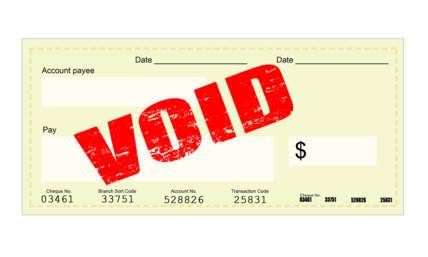Accounting Journal Entries Examples - What You Should Know
It’s important to keep an accounting journal to always have a record of prior months and any patterns that you can find throughout the information. Accounting journals can affect your bookkeeping for the business, and you can also use them to your advantage.
Today we will be exploring all of this, as well as a number of example entries that you can take inspiration from when creating your own accounting journals.
Advantages From Accounting Journals
There are a number of ways that an accounting journal can benefit business owners - especially those of small business owners. For example, if you were to buy something for the business with your own money, you could add it into your journal for it then to be translated into the books at a later date.
This helps you to avoid using the business bank account, which many people prefer when you’re using a different source of funds for the business. If you were to enter another source of funds to your bookkeeping, it might confuse the system and alter the information already inputted.
Another benefit of using an accounting journal is to make sure that you are accounting for all expenses, even the ones that you are purchasing from your personal account. This will then reduce your profit and therefore the tax that you need to pay, which can benefit you in the long run. Of course, it also gives you a more accurate description of how much you’re spending on your business.
Your bookkeeping software might already have somewhere to put this information to make it easier on you, so look for a column or row that mentions journals, like ‘journal entries’ or ‘journal transactions’. Here you can add the relevant information and your books will update.
Also read: 8 Steps To Create An Effective Employment Development Plan For Your Small Business And Its Benefits

What Is Included In An Accounting Journal Entry?
There are a number of things that might be included within your accounting journal entry, which we will look at now. Bear in mind that not all of these things will necessarily be in your journal entry, but at least some of them will be.
Description
This will be a brief summary of the expense so that you can remember what the money was used for. An example might be ‘business expenses paid by personal account’.
Debit Account
Here you should put in the account that is closest to the type of expense you’ve made, with an explanation of the product purchased and the cost.
Also read: Payroll Tax Vs Income Tax - The Ultimate Guide
Credit Account
Enter the Owner’s Capital, with the same description as before, and the same cost value.
Date
This field calls for the date of the transaction, or the last day of the month when the transaction was made.
Debit/ Credit Value
Both the debit and credit value will be the same in the accounting journal, as your software won’t allow you to finish if they’re not balanced.
Sales Tax
You might have to add in your sales tax for your books, so make sure that it is added to the expense rather than the capital. Your software will allow you to click the correct sales tax, or require you to add in two debit lines instead. The first line will be for the expense cost before tax, and the second for the overall cost including sales tax.
Also read: What Should I Do If My Employer Won’t Provide A Pay Stub?

Accounting Journal Entry Examples
Below are a few examples of journal entries to help you get a better understanding of what your accounting journal might look like.
Liabilities
| Date | Description | Account Ref | Debit Value | Credit Value |
| May 23rd | Bank Account | J001 | 7,000.00 | |
| Bank Loan | J290 | 7,000.00 | ||
| Loan drawdown from INT bank | ||||
| May 28th | Inventory | J100 | 250.00 | |
| Accounts payable | J150 | 250.00 | ||
| June 3rd | Loan | J290 | 325.00 | |
| Bank account | J001 | 325.00 | ||
| Loan repayment to INT bank |
From this example above, you can see that Andy was granted a business loan on May 23rd for $7,000.
Andy then had to buy some more inventory for his business, which were purchased on credit and cost $250 total. This was on May 28th.
On June 3rd, the bank who offered the loan took their first repayment of $325.
Capital And Drawing
| Date | Description | Account Ref | Debit Value | Credit Value |
| March 2nd | Bank Account | J001 | 3,000.00 | |
| Capital | J299 | 3,000.00 | ||
| Funds added to account | ||||
| March 10th | Withdrawn | J300 | 150.00 | |
| Bank account | J001 | 150.00 | ||
| Funds withdrawn by the owner | ||||
| March 15th | Withdrawn | J300 | 90.00 | |
| Bank account | J001 | 90.00 | ||
| Funds withdrawn by the owner for personal reasons. |
From the example above, you can see that Andy added $3,000 into the business account on March 2nd to give the business a boost in capital.
On March 10th, he then withdrew $150 for his car payment.
Then again, on March 15th, Andy withdrew $90 to pay for groceries.
Assets
| Date | Description | Account Ref | Debit Value | Credit Value |
| September 30th | Inventory | J100 | 1,500.00 | |
| Bank Account | J001 | 1,500.00 | ||
| Purchase of stock and window dressing | ||||
| October 8th | Furniture | J200 | 800.00 | |
| Bank account | J001 | 800.00 | ||
| Purchase of shelving and desk with chair | ||||
| October 9th | Electrical equipment | J200 | 845.00 | |
| Plants and decoration | J650 | 350.00 | ||
| Bank account | J001 | 1,195.00 | ||
| Purchase of computer and store decoration |
From the example, you can see that Andy spent $1,500 for additional inventory and window dressings on September 30th.
On October 8th, he purchased a shelving unit and desk with an office chair.
Finally, on October 9th he purchased some plants and decoration to liven up the store, as well as a computer. This totalled $1,950.
Also read: Make a Budget in Excel

Summary
We hope that this article and examples of what your accounting journal might look like has come as some help to you. Accounting journals are beneficial to business owners and allow you to keep track of all of the money being spent on your business.
You can keep track of many different expenditures within an accounting journal, which is why we’ve included a number of different examples in this article.
Your check stubs can be a great way for you to keep track of your finances so you can easily add the figures to your spreadsheet.
Also read: How Many Savings Accounts Should I Have?















